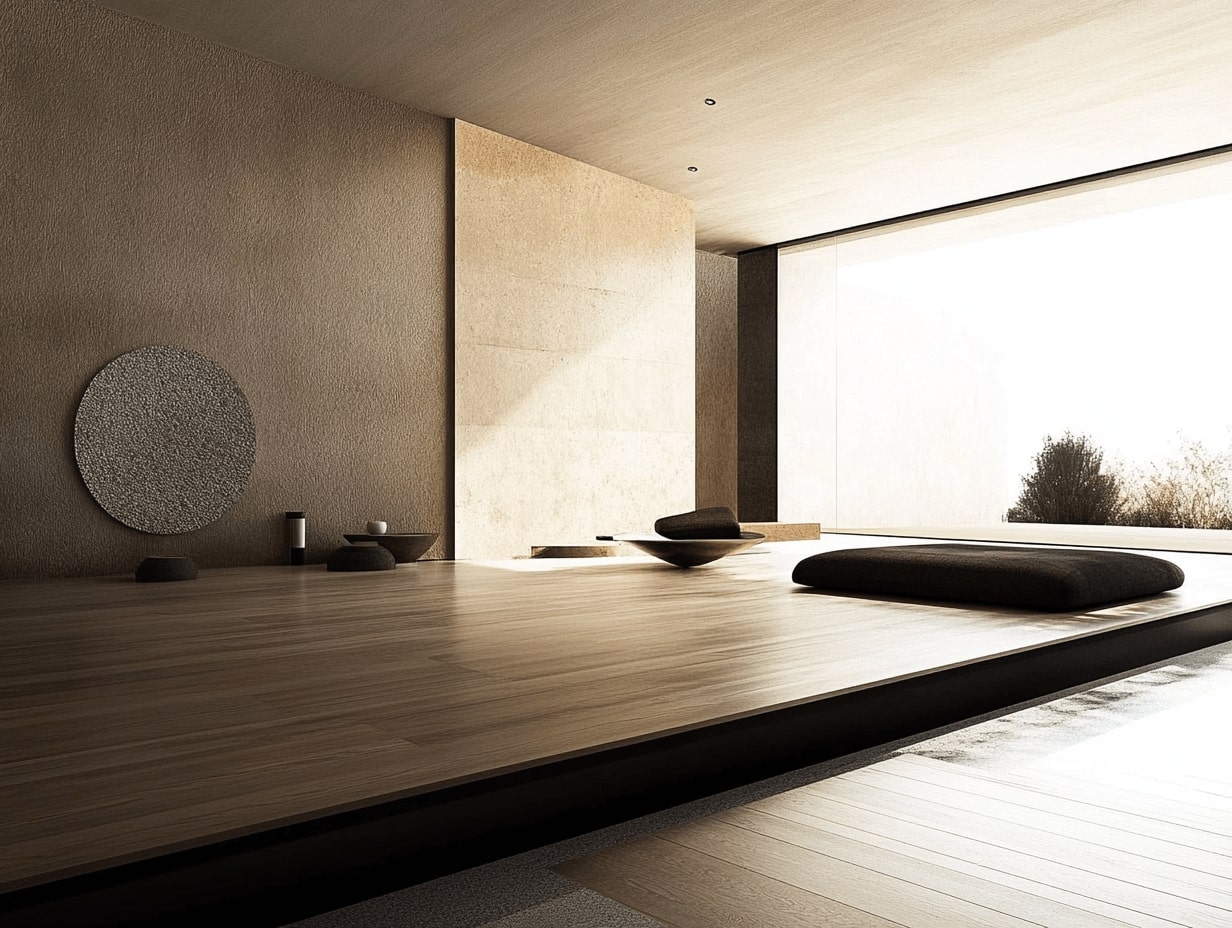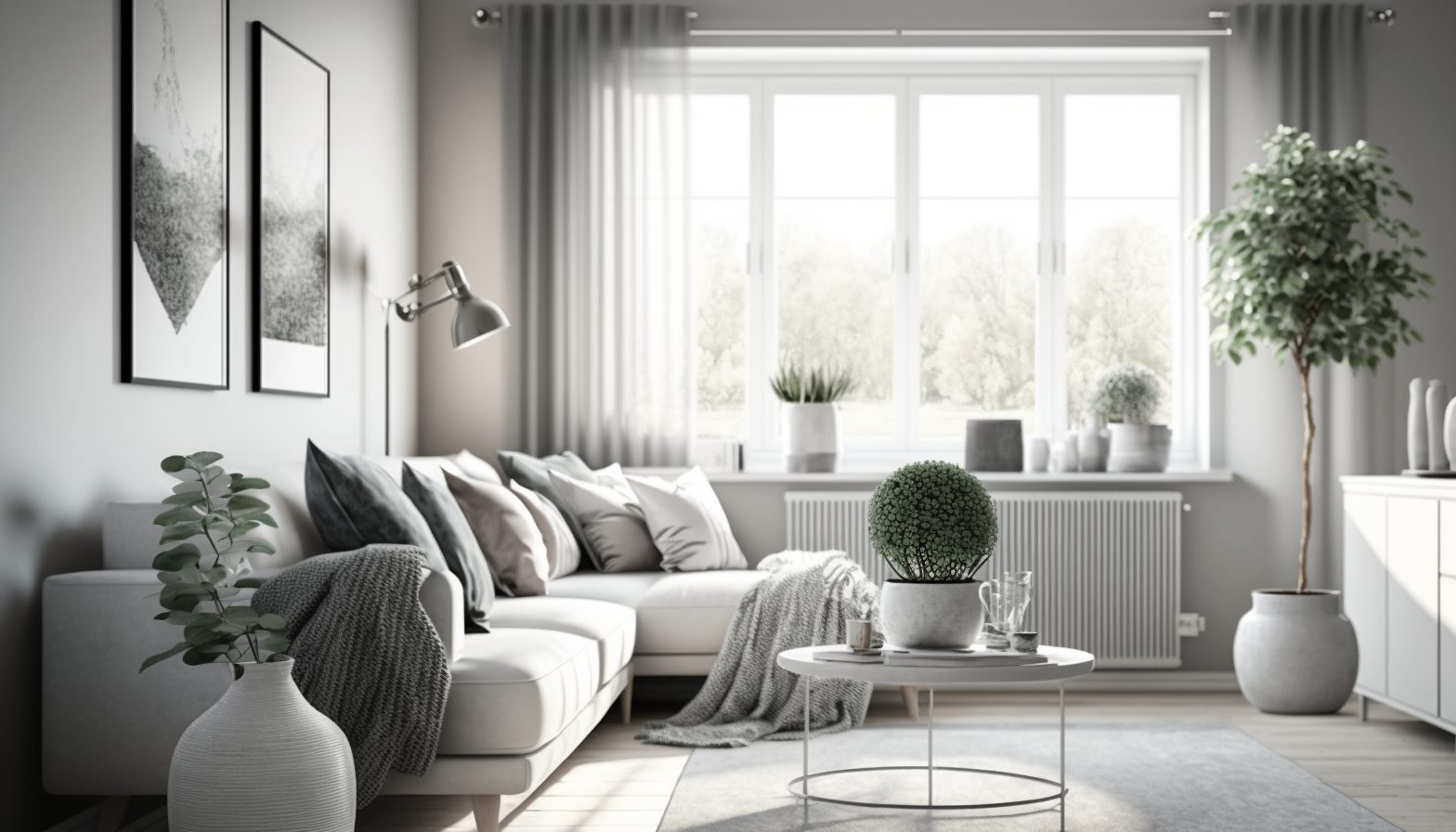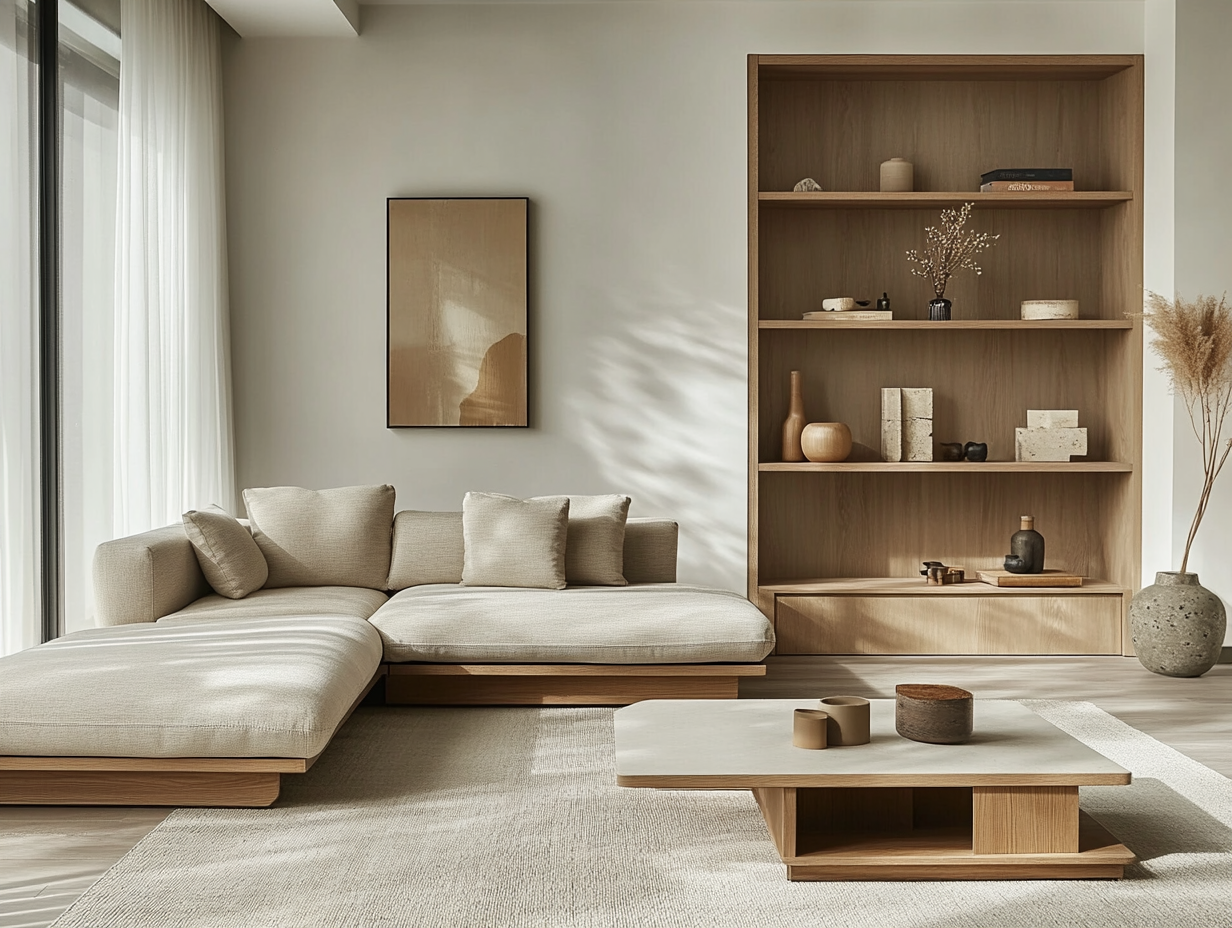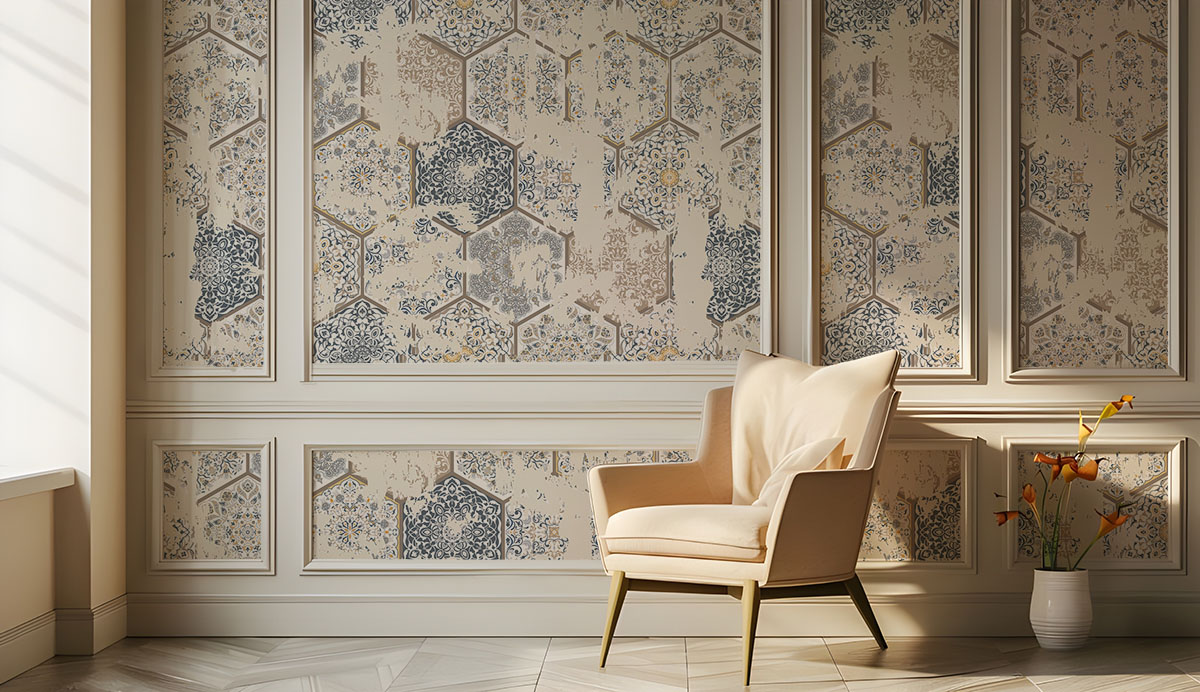The influence of minimalism on interior design: creating spaces that promote mental clarity

Understanding the Minimalist Movement in Interior Design
As modern life becomes increasingly hectic, the quest for tranquility within the home gains significance. Homeowners are recognizing the necessity for serene environments that not only please the eye but also nurture the mind. This shift towards minimalism in interior design reflects a deeper understanding of how our surroundings profoundly impact our emotional and psychological well-being.
The philosophy of “less is more” stands at the heart of minimalism, advocating for simplicity in design. It emphasizes the creation of spaces that promote ease and clarity by removing excess. Key characteristics that define this movement include:
- Open spaces that eliminate clutter, allowing for easy movement and a sense of freedom.
- Neutral color palettes that create a calm ambiance, fostering a peaceful atmosphere conducive to relaxation and reflection.
- Functional furniture that serves multiple purposes, minimizing the need for excess items while maximizing utility.
These design elements do more than enhance aesthetics; they play a vital role in emotional well-being. Numerous studies suggest that cluttered environments may contribute to heightened stress levels and anxiety. For instance, a report published by the Personality and Social Psychology Bulletin highlights how visual clutter can lead to decreased focus and cognitive overload. As a result, the adoption of minimalism in interior design is seen not only as a stylistic choice but as a pathway to creating tranquil retreats that support mental clarity.
Cities across the United States, from the innovative design scenes of San Francisco to the bustling energy of New York, are increasingly adopting minimalist principles. High-rise apartments in urban landscapes often capitalize on open floor plans that emphasize meeting the needs of inhabitants without overwhelming them with superfluous décor. This pragmatic approach to living aligns perfectly with the fast-paced lifestyles prevalent in these metropolitan areas, where space is at a premium.
Applying Minimalism for Inner Peace
To successfully incorporate minimalist principles into interior design, homeowners can start by evaluating their spaces through the lens of functionality and simplicity. One effective technique is to declutter by assessing the necessity of each item and its impact on the overall atmosphere of the space. For instance, the Japanese concept of “Wabi-Sabi” encourages finding beauty in imperfection, which can lead to a unique yet uncluttered aesthetic that promotes mindfulness.

Moreover, integrating natural elements—such as plants, wood, and stone—can further enhance the calming effect of minimalistic design. These organic materials tend to resonate well with human senses, creating a cohesive environment that speaks to both comfort and elegance. In summary, minimalism not only reshapes the way we design our interiors but also fosters a lifestyle centered on mental clarity and inner peace, urging us to embrace simplicity amidst the chaos of modern life.
DIVE DEEPER: Click here to discover more insights
Embracing the Essence of Minimalism in Everyday Spaces
The notion of minimalism has transcended mere aesthetic principles, emerging as a comprehensive ideology that influences how we design and interact with our interiors. As urban dwellers grapple with the challenges of compact living, the relevance of minimalism resonates profoundly, offering a practical yet stylish solution to the complexities of modern life. Central to this movement is the understanding that our living environments can either enhance or hinder our mental clarity and overall well-being.
By adopting a minimalist approach, many homeowners are discovering the psychological benefits of decluttered spaces. Researchers have documented how environments filled with excessive furnishings and decorations can lead to a state of mental chaos, impacting one’s ability to focus and relax. According to a study published in the Journal of Personality and Social Psychology, individuals exposed to cluttered environments reported higher levels of stress and frustration. Thus, creating minimalist interiors serves as an antidote to cognitive overload, promoting a sense of harmony and clarity.
To fully harness the benefits of minimalism, it is essential to explore its core elements. These include:
- Simplicity in Design: A minimalist space often features clean lines, uncomplicated shapes, and a restrained choice of colors that work together harmoniously. This simplicity encourages a direct connection with the environment.
- Quality Over Quantity: Investing in fewer, high-quality furnishings fosters a sense of pride and comfort. Handcrafted pieces, natural materials, and functional designs elevate the space without overwhelming it.
- Intentional Use of Light: Natural light plays a pivotal role in minimalism by enhancing spaces and contributing to a sense of openness. Large windows, skylights, and light-colored walls reflect and amplify sunlight, reducing the need for artificial lighting and creating an uplifting atmosphere.
These components are not just decorative choices; they actively contribute to a more profound sense of mental clarity. By designing spaces that prioritize simplicity and functionality, individuals can carve out personal sanctuaries that foster mindfulness and relaxation. Many minimalist practitioners advocate for the “one in, one out” rule—every time a new item enters the home, an old one should be discarded. This practice not only keeps spaces uncluttered but also encourages intentional living.
As the minimalist movement gains traction, it is also crucial to recognize its cultural roots. For instance, Scandinavian design has significantly influenced minimalism in American interior design, characterized by its functionality, simplicity, and connection to nature. The trend has spread across various demographics, with urban lofts embracing exposed materials, while suburban homes opt for sleek finishes and open layouts. This evolution reflects a collective desire for environments that do not just look appealing, but also resonate with deeper emotional needs.
In summary, the influence of minimalism on interior design extends beyond visual simplicity to promote mental clarity and emotional well-being. By cultivating intentional spaces adorned with stylish yet functional items, homeowners can create sanctuaries that allow them to navigate the complexities of life with greater ease and perspective.
The Influence of Minimalism on Interior Design: Creating Spaces That Promote Mental Clarity
In the realm of interior design, minimalism is not just a style; it’s a profound ethos that seeks to enhance our mental well-being through the art of simplicity. Emphasizing open spaces, clean lines, and a limited color palette, minimalism fosters an environment that is not only aesthetically pleasing but also profoundly calming. By reducing visual clutter, designers are creating sanctuaries that prioritize clarity and focus, allowing occupants to engage in the present moment without the distractions of excess. Research has indicated that environments filled with excess can lead to feelings of anxiety and stress. In contrast, minimalism promotes a sense of order and calm. Each carefully chosen item serves a purpose and holds meaning, encouraging individuals to cherish what they have rather than succumbing to the pressures of consumerism. This lifestyle shift can lead to better mental health outcomes, fostering creativity, enhancing productivity, and improving the overall quality of life.Moreover, minimalism’s focus on functionality ensures that every aspect of a space is intentional. Multifunctional furniture, for instance, maximizes usable space while maintaining a clean appearance. This practicality marries beautifully with aesthetics, creating harmonious spaces conducive to relaxation and focus.To explore the various ways minimalism influences the design choices in contemporary homes and offices, consider the following table:
| Category | Key Features |
|---|---|
| Simplicity | Fewer decorative elements, creating a sense of spaciousness. |
| Functionality | Multifunctional spaces that adapt to various needs without extra furniture. |
| Natural Light | Maximized windows and light colors that amplify brightness and encourage positivity. |
| Nature Integration | Incorporation of plants for improved air quality and tranquility. |
These elements of minimalism not only define a trend but a lifestyle choice aimed at improving mental clarity and emotional well-being. As residential and commercial spaces increasingly adopt minimalist designs, the impact on inhabitants becomes more evident, paving the way for a shift towards healthier living environments.
DISCOVER MORE: Click here to unveil the power of minimalism in your routine
The Role of Color and Texture in Minimalist Design
While the essence of minimalism is often associated with simplicity and decluttering, the role of color and texture cannot be overstated when it comes to creating spaces that promote mental clarity. Color psychology indicates that different hues evoke various emotional responses, making their selection critical in a minimalist setting. For instance, soft neutrals like whites, grays, and beiges can create a calming environment that reduces anxiety, while splashes of muted colors can invigorate a space without overwhelming the senses.
In minimalist interiors, the use of color goes beyond mere aesthetics; it shapes our mental state and enhances productivity. A study conducted by the American Psychological Association revealed that cooler shades such as blues and greens can create a tranquil atmosphere, aiding concentration and fostering creativity. Consequently, as homeowners incorporate these tones into their minimalist designs, they not only achieve a visually pleasing outcome but also cultivate an environment conducive to clarity and focus.
Texture, on the other hand, plays a pivotal role in enriching minimalist spaces that might otherwise feel stark or uninviting. By combining elements like soft textiles, smooth wood finishes, and rough stone, designers enhance sensory experiences, making spaces feel more lived-in and inviting. This connection to tactile elements can ground individuals in their environment, creating a sense of stability amid the chaos of daily life. For instance, a monochromatic living room featuring a plush wool rug paired with sleek leather furniture invokes a warmth that softens minimalism’s often rigid lines.
The Essential Concept of Zen Spaces
The convergence of minimalism and the philosophy of Zen underscores the significance of creating interior spaces that act as refuges from external distractions. The Zen approach emphasizes simplicity, tranquility, and the importance of nature, all of which align harmoniously with minimalist design principles. This philosophy encourages the incorporation of elements like indoor plants, natural light, and open layouts that promote a sense of freedom and peace.
Incorporating greenery into a minimalist design not only purifies the air but also instills a sense of calm. Research from the University of Queensland found that plants in the workplace increased productivity by up to 15%. In homes, timeless features such as a single large potted fern or succulents on a windowsill can serve as focal points that draw the eye and encourage mindfulness, thereby enhancing mental clarity.
Moreover, the deliberate layout of spaces plays a fundamental role in achieving a Zen-like atmosphere. Open floor plans promote movement and allow for seamless transitions between different areas, reducing feelings of confinement and stress. Homeowners are increasingly opting for layouts that intentionally limit potential distractions, such as placing work areas away from living spaces, fostering an environment where relaxation and productivity can coexist peacefully.
The Future of Minimalism in Interior Design
As urban living continues to evolve, the principles of minimalism are gaining prominence across diverse demographics. From tiny apartments in bustling city centers to expansive homes in suburban areas, homeowners are recognizing the importance of crafting spaces that promote mental clarity and emotional wellness. The rise of smart home technology encapsulates this trend, allowing for streamlined control over lighting and climate, further reducing environmental stressors.
With continual advancements in sustainable materials, contemporary minimalism is poised to blend eco-friendliness with efficient design. Innovations such as biodegradable furniture and energy-efficient appliances create a compelling narrative, aligning the desire for minimalism with a collective responsibility toward the planet.
Thus, the influence of minimalism on interior design extends well beyond aesthetics, paving the way for spaces that prioritize mental clarity, emotional health, and a closer connection to nature. As this movement continues to grow, it poses an essential question: How can we design interiors that not only look good but also elevate our quality of life?
DISCOVER MORE: Click here to dive deeper
Conclusion: Embracing Minimalism for Mental Clarity
In an increasingly complex world, the influence of minimalism on interior design presents a compelling opportunity to restore balance and promote mental clarity. Through the deliberate choice of color, texture, and thoughtful layouts, minimalist spaces transform our living environments into sanctuaries of tranquility and focus. The strategic integration of natural elements and sustainable materials not only elevates aesthetic appeal but also connects us to the restorative powers of nature.
As we move forward, the ongoing evolution of minimalism invites us to rethink our relationship with our surroundings. Whether through expansive open layouts that facilitate movement or the calming impact of green plants enriching our spaces, the minimalist approach serves as a reminder of the benefits of simplicity. Homeowners are challenged to evaluate their personal spaces critically, asking whether each item and design choice contributes to their well-being.
Moreover, with the expansion of smart home technology, we are equipped with innovative tools to further enhance our minimalist designs, creating environments that are not only beautiful but also functional and stress-reducing. The marriage of technology and design fosters a seamless connection between the spaces we inhabit and our emotional health.
Ultimately, embracing minimalism in interior design is more than just a trend—it is a lifestyle choice that encourages mental clarity, emotional resilience, and environmental awareness. As we navigate the complexities of modern life, the principles of minimalism provide a guiding light toward achieving serene and purposeful living spaces that enrich our quality of life.


